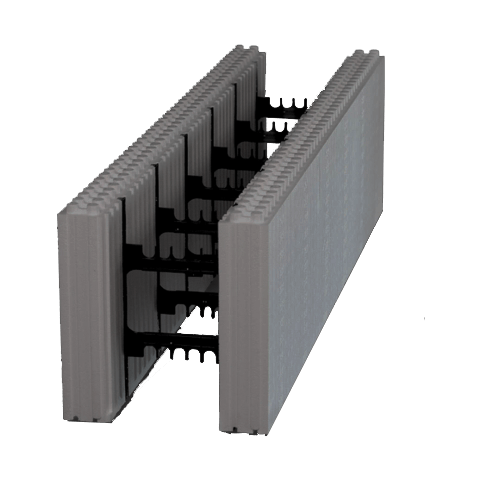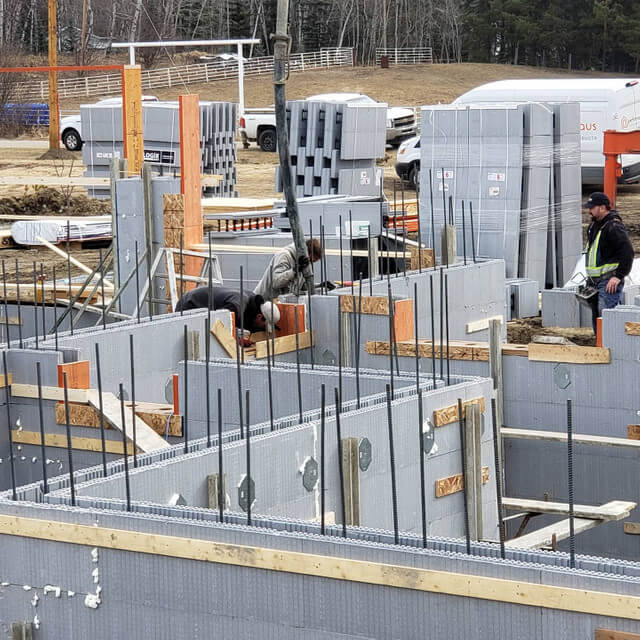Boosting R-values Without an Inch of Extra Thickness in Your Walls

In most cases, insulation thickness dictates a wall’s R-value. But did you know that you don’t have to change your wall’s dimensions to boost its R-values?
In this post, we will discuss Logix Platinum ICF series, and see how these forms help your project balance R-values with wall thickness.
Why Would I Need Higher R-values?
If you’re building in extreme climates, local codes may ask for higher R-values in exterior walls. But the code minimum should not be your only consideration. Where the code only calls for an R-5 foam board with R-22 batt, the home’s walls may offer more comfort and energy efficiency with a higher-rated board.
In cold regions, the extra R-value slashes heat loss, while in hot zones it works the same way to keep heat out. In both scenarios, the home’s indoor temperature stays pleasant, and the dwellers aren’t forced to rely on their conditioning systems as much.
Which brings us to the next point: energy efficiency. Walls with higher R-values reduce a home’s heat loss. When the heat has no means of a quick escape from the interior, the heating systems get a break and consume less power. Despite giant, recent strides in this department from many State codes, the requirements are just the bare minimum. Going beyond these is a painless way to cut the owners’ long-term heating and cooling costs and reduce the home’s CO2 emissions.
It’s no secret that stuffing a wall with insulative layers will improve it’s R-value. But this practice comes at a cost: you’re increasing the depth of the wall cavity.

Why Does Wall Thickness Matter?
The thickness of your wall assembly is typically defined in the construction documents, and changing it affects critical building parameters.
By changing the wall thickness, you’re inevitably slashing the Net Floor Area (NFA) of the building. On small residential projects, the owner may not mind too much if a slightly thicker wall takes away from the square footage. A commercial or institutional owner, on the other hand, may be less amenable to such a change. Imagine, for instance, a building with a Gross Floor Area (GFA) of 8,000 ft2. With 6-inch exterior walls, its NFA is 7,821 ft2; now let’s add an inch to those walls, and the NFA quickly changes to 7,791 – that’s a loss 30 ft2! And if the building has 2, or 3 stories? That’s 60 and 90 ft2 of NFA lost to just 1 extra inch of insulation!
Conversely, widening the wall to the exterior may pose problems when site space is limited and setbacks are rigid.
If you’re still not convinced, just ask your estimator how much more you’ll spend in materials and labor by adding that extra inch of insulation to a large enough building!
How Can I Increase R-values Without Adding Wall Thickness?
It’s a common fallacy that you need more wall depth to accommodate higher R-values.
It’s just not true.
What you need is the right product. Granted, opting for top R-value insulation often means an increase in the size of the rigid foam boards, or the depth of the cavity if you’re using batt. But you don’t have to trade depth for R-value. Logix Platinum Series ICF blocks are designed specifically to give stellar R-values without adding an inch to their width.
How Does The Logix Platinum Series Work?

See How The Logix Platinum Series Makes The Difference!


